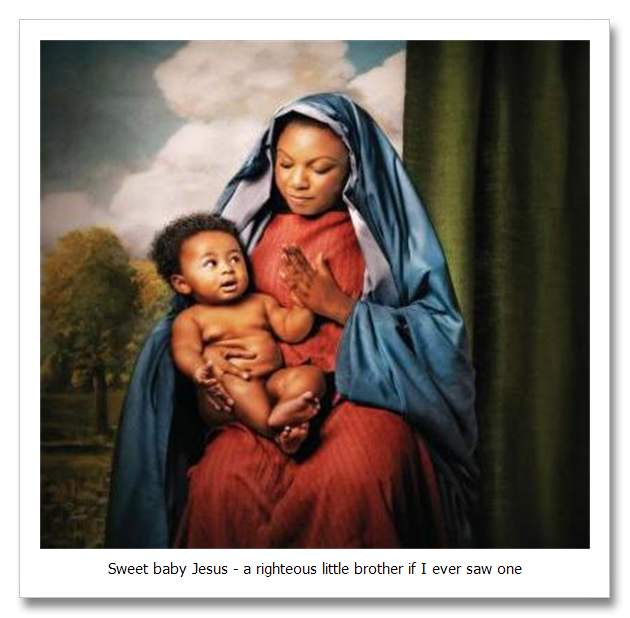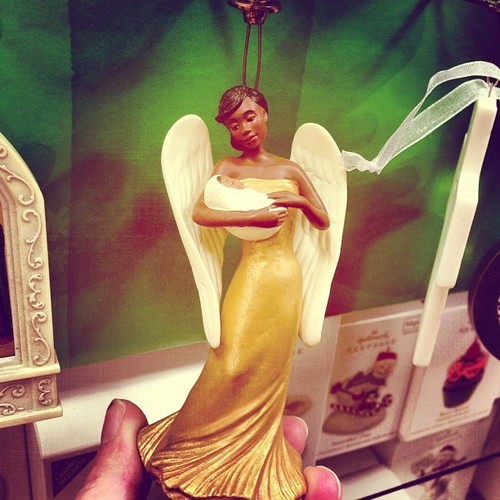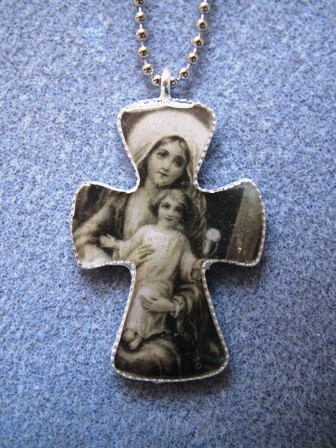Source(Google.com.pk)
Black Baby Jesus Pictures Biography
Of the numerous aliases of late Wu-Tang Clan rap artist Old Dirty Bastard, there is one significant to this entry, “Black Baby Jesus.” I figured he gave himself that name for laughs, but I wonder if he knew, before his unfortunate death in 2004, that there was actually an annual festival in honor of Black Baby Jesus in the Philippines.
The origin of the Ati-atihan Festival of Kalibo, and all its sibling festivals of different monikers in other towns, is the celebration of the acquiring of Panay Island from the black tribespeople of Borneo. As un-PC as it sounds to the Westerner, people go out in black face or full black body paint and dance in the streets to celebrate their black aboriginal heritage. The Catholic Church thought it was a pagan ritual that took attention away from their expanding religion and put a spin on the festival early on, preaching that it was actually a festival to celebrate Santo Niño, Jesus Christ as a child. Combine the two origins of the festival and you have a party that celebrates a statue of baby Jesus in black face make-up.
In the city of Iloilo where the party is called Dinagyang, festivities wouldn’t officially start until a few days, but the big to-do in town was the rehearsal parade, a town-wide event just as big.
“WHEN ARE WE LEAVING FOR ILOILO?” I asked Tita Josie that morning in our Guimaras bungalow.
“Today is Friday?”
“Yeah.”
“Oh, I thought it was Thursday.” It’s amazing how travel can make you loose all concept of date and time; she thought we’d have an extra day to see more blue-signed sites in Guimaras, but that would have to be cut short if we were going to see any of the pre-Dinagyang festivities that afternoon back on Panay.
After packing up, we ventured via tricycle to the Guisi Point lighthouses, which weren’t much to see themselves, although they looked out to a scenic bay that sort of made the trip worthwhile. The tricycle driver then took us to the town of Jordan for a quick bowl of batchoy to prepare our stomachs for oysters — “It’s not good to eat talaba when you’re hungry,” Tita Josie said — and then we hopped on a ferry boat to take us the ten minutes back to Panay.
“Where is Larry?” Tita Josie asked. She had called our trusty taxi driver we met before for a pick-up so that we could go out for lunch. It wasn’t too hard to spot him and soon we were in the air-conditioned comfort of his Tata company car on the way back to Nato & Helen’s restaurant. Having skipped breakfast aside from that batchoy stomach primer, I was all set for a final splurge on oysters before leaving the oyster land. We started off with four kilos of fresh oysters, steamed — although, like Old Dirty Bastard a.k.a. Black Baby Jesus once said, “I like it raw… Ooh baby, I like it raw...” as well. Without a doubt, they were the tastiest, most plump oysters I’ve ever had I must say — and we ultimately ordered three more kilos. My favorite ones were the “super oysters;” five or more oysters clustered and stuck together with five shells and five pieces of meat. Of the seven kilos (that only cost about five bucks), half of that went into my stomach — the world truly was my oyster, if only for half an hour.
THE STREETS WERE COMING ALIVE AROUND MID-AFTERNOON for the Dinagyang rehearsal parade. We head over to the main cathedral where the parade began, with the replica of the original Black Baby Jesus (picture above) being transferred to a parade float. For those who were too far away to see the holy statue, there was a big dress-up Black Baby Jesus waving to the crowds. Some uptight Catholics might have found this just wrong, but perhaps they just need to sit down and watch Kevin Smith’s movie Dogma, which theorizes that Jesus was black anyway.
Group by group, different competing tribes marched down the street from the church to the grand bandstand full of people, dancing to the infectious rhythms of their drummers and xylophone players. It was no Wu-Tang Clan, but pretty good anyway. Although the parade was merely a rehearsal for the big fully-costumed one later on, each participant represented his/her team in uniforms of his/her tribe’s colors for a sense of unity, and above all, fashion. It seemed the competition was not just for dance but for dress, each tribe trying to outdo the others with matching garb ranging from tribal to slick, flamboyant to cool.
With Black Baby Jesus leading the way, along with some tribal mascots, the teams proceeded down the street, each with a choreographed routine that was sometimes tribal dance, sometimes African-American fraternity step show, sometimes a little bit of both. For one of the final groups to march the parade route, a tribe showed up wearing nothing flashy at all. They were dressed in plain clothes, each one wearing a Muslim-like
headdress made out of an old t-shirt rag.
What can this tribe possibly do to outdo the others? I thought.
They blew me and everyone else away of course, as underdogs always do, with a crazy acrobatic routine that involved bamboo sticks and somersaults in the air. Guys lifted girls up and twirled them around, while others twirled around from bamboo sticks like Chinese acrobats. Old Dirty Bastard a.k.a. Black Baby Jesus would have been proud — assuming he was alive and wasn’t high or running from the police, that is.
THE MINIVANS WERE FULL and we had missed the last public Ceres Liner bus back to Kalibo, so Larry the taxi driver took us all the way back to Kalibo for a fee that we split with three other guys in the same situation. Upon arrival in Kalibo’s main plaza, the streets were just dying down from their own rehearsal parade, but the real deal would happen the following morning — tribes, costumes, drummers, Black Baby Jesuses and all.
Black Baby Jesus Pictures Biography
Of the numerous aliases of late Wu-Tang Clan rap artist Old Dirty Bastard, there is one significant to this entry, “Black Baby Jesus.” I figured he gave himself that name for laughs, but I wonder if he knew, before his unfortunate death in 2004, that there was actually an annual festival in honor of Black Baby Jesus in the Philippines.
The origin of the Ati-atihan Festival of Kalibo, and all its sibling festivals of different monikers in other towns, is the celebration of the acquiring of Panay Island from the black tribespeople of Borneo. As un-PC as it sounds to the Westerner, people go out in black face or full black body paint and dance in the streets to celebrate their black aboriginal heritage. The Catholic Church thought it was a pagan ritual that took attention away from their expanding religion and put a spin on the festival early on, preaching that it was actually a festival to celebrate Santo Niño, Jesus Christ as a child. Combine the two origins of the festival and you have a party that celebrates a statue of baby Jesus in black face make-up.
In the city of Iloilo where the party is called Dinagyang, festivities wouldn’t officially start until a few days, but the big to-do in town was the rehearsal parade, a town-wide event just as big.
“WHEN ARE WE LEAVING FOR ILOILO?” I asked Tita Josie that morning in our Guimaras bungalow.
“Today is Friday?”
“Yeah.”
“Oh, I thought it was Thursday.” It’s amazing how travel can make you loose all concept of date and time; she thought we’d have an extra day to see more blue-signed sites in Guimaras, but that would have to be cut short if we were going to see any of the pre-Dinagyang festivities that afternoon back on Panay.
After packing up, we ventured via tricycle to the Guisi Point lighthouses, which weren’t much to see themselves, although they looked out to a scenic bay that sort of made the trip worthwhile. The tricycle driver then took us to the town of Jordan for a quick bowl of batchoy to prepare our stomachs for oysters — “It’s not good to eat talaba when you’re hungry,” Tita Josie said — and then we hopped on a ferry boat to take us the ten minutes back to Panay.
“Where is Larry?” Tita Josie asked. She had called our trusty taxi driver we met before for a pick-up so that we could go out for lunch. It wasn’t too hard to spot him and soon we were in the air-conditioned comfort of his Tata company car on the way back to Nato & Helen’s restaurant. Having skipped breakfast aside from that batchoy stomach primer, I was all set for a final splurge on oysters before leaving the oyster land. We started off with four kilos of fresh oysters, steamed — although, like Old Dirty Bastard a.k.a. Black Baby Jesus once said, “I like it raw… Ooh baby, I like it raw...” as well. Without a doubt, they were the tastiest, most plump oysters I’ve ever had I must say — and we ultimately ordered three more kilos. My favorite ones were the “super oysters;” five or more oysters clustered and stuck together with five shells and five pieces of meat. Of the seven kilos (that only cost about five bucks), half of that went into my stomach — the world truly was my oyster, if only for half an hour.
THE STREETS WERE COMING ALIVE AROUND MID-AFTERNOON for the Dinagyang rehearsal parade. We head over to the main cathedral where the parade began, with the replica of the original Black Baby Jesus (picture above) being transferred to a parade float. For those who were too far away to see the holy statue, there was a big dress-up Black Baby Jesus waving to the crowds. Some uptight Catholics might have found this just wrong, but perhaps they just need to sit down and watch Kevin Smith’s movie Dogma, which theorizes that Jesus was black anyway.
Group by group, different competing tribes marched down the street from the church to the grand bandstand full of people, dancing to the infectious rhythms of their drummers and xylophone players. It was no Wu-Tang Clan, but pretty good anyway. Although the parade was merely a rehearsal for the big fully-costumed one later on, each participant represented his/her team in uniforms of his/her tribe’s colors for a sense of unity, and above all, fashion. It seemed the competition was not just for dance but for dress, each tribe trying to outdo the others with matching garb ranging from tribal to slick, flamboyant to cool.
With Black Baby Jesus leading the way, along with some tribal mascots, the teams proceeded down the street, each with a choreographed routine that was sometimes tribal dance, sometimes African-American fraternity step show, sometimes a little bit of both. For one of the final groups to march the parade route, a tribe showed up wearing nothing flashy at all. They were dressed in plain clothes, each one wearing a Muslim-like
headdress made out of an old t-shirt rag.
What can this tribe possibly do to outdo the others? I thought.
They blew me and everyone else away of course, as underdogs always do, with a crazy acrobatic routine that involved bamboo sticks and somersaults in the air. Guys lifted girls up and twirled them around, while others twirled around from bamboo sticks like Chinese acrobats. Old Dirty Bastard a.k.a. Black Baby Jesus would have been proud — assuming he was alive and wasn’t high or running from the police, that is.
THE MINIVANS WERE FULL and we had missed the last public Ceres Liner bus back to Kalibo, so Larry the taxi driver took us all the way back to Kalibo for a fee that we split with three other guys in the same situation. Upon arrival in Kalibo’s main plaza, the streets were just dying down from their own rehearsal parade, but the real deal would happen the following morning — tribes, costumes, drummers, Black Baby Jesuses and all.
Black Baby Jesus Pictures

Black Baby Jesus Pictures


Black Baby Jesus Pictures


Black Baby Jesus Pictures


Black Baby Jesus Pictures


Black Baby Jesus Pictures


Black Baby Jesus Pictures


Black Baby Jesus Pictures


Black Baby Jesus Pictures


Black Baby Jesus Pictures


No comments:
Post a Comment